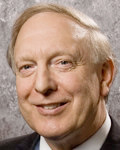QE3 no quick fix for U.S.
- By James A.Dorn
 0 Comment(s)
0 Comment(s) Print
Print E-mail
Beijing Review, September 9, 2011
E-mail
Beijing Review, September 9, 2011

Although Fed Chairman Ben Bernanke did not announce another round of quantitative easing (QE) during his speech at the annual Jackson Hole, Wyoming, retreat for central bankers, he did leave the door open for further stimulus. Given the dismal state of the U.S. economy after QE2, which pumped nearly $600 billion into longer-term Treasury securities designed to lower interest rates and encourage investment, Bernanke should be humble in his expectations about what the Fed can do to generate economic growth.
Indeed, the most important statement coming out of the meeting was Bernanke's remark that "most of the economic policies that support robust economic growth in the long run are outside the province of the central bank." That may sound like dodging responsibility, but it is a frank admission of the limits of monetary policy.
If printing money were the solution to unemployment and sluggish growth, Bernanke could just drop dollars like manna from heaven. What the United States needs is not another dose of monetary stimulus but a more certain policy regime that limits the growth of government spending, lowers taxes on capital, and provides an environment conducive to private free markets.
Bernanke was right to say in a speech in Atlanta in June that "monetary policy cannot be a panacea." He has criticized excessive government spending and borrowing, but his very policies have promoted such behavior. By holding interest rates too low for too long, the Bernanke Fed has mispriced credit and inflated asset bubbles in bonds and commodities.
The role of the Fed is not to support asset prices but to prevent inflation, and thus protect the long-run value of the dollar. The evidence since the 1970s is that monetary policy cannot permanently reduce unemployment or increase real GDP growth. If it could, then U.S. real income per capita should be rising, not falling.
Even in the short run, monetary policy is unlikely to have much of an impact on unemployment and real output, if market participants correctly forecast inflation and build those forecasts into nominal prices. Even after the Fed has purchased more than $2 trillion worth of government debt, unemployment is still more than 9 percent, while headline inflation now exceeds 4 percent.
Perils of QE3
Another round of quantitative easing, which might well be ushered in after the Federal Open Market Committee's two-day meeting on September 21-22, is more likely to add to inflationary expectations and increase the unemployment rate, rather than generate economic growth. Stagflation and a weaker dollar, not prolonged prosperity, are the likely outcomes of QE3.
Breaking promises to holders of U.S. debt—via inflation—is not a recipe for attracting foreign investment or for harmonious relations. Keeping real interest rates artificially low to spur development under-prices risk and misallocates scarce capital. Development requires reining in government profligacy and allowing private entrepreneurs to innovate and expand the scope of markets. Risking inflation for the hope of spurring growth and lowering unemployment is a ploy that cannot work.
The longer the Fed intervenes in the credit markets and distorts the price of loanable funds, the greater will be the adjustment costs later on. Postponing hard choices while running the printing presses—to monetize government debt—creates moral hazard and a too-big-to-fail mentality.
Bernanke is rightly concerned about the inability of the Congress to cut the size and scope of government, but his own actions have allowed government to grow and constrained the private sector, which has always been the engine for real growth.






Go to Forum >>0 Comment(s)